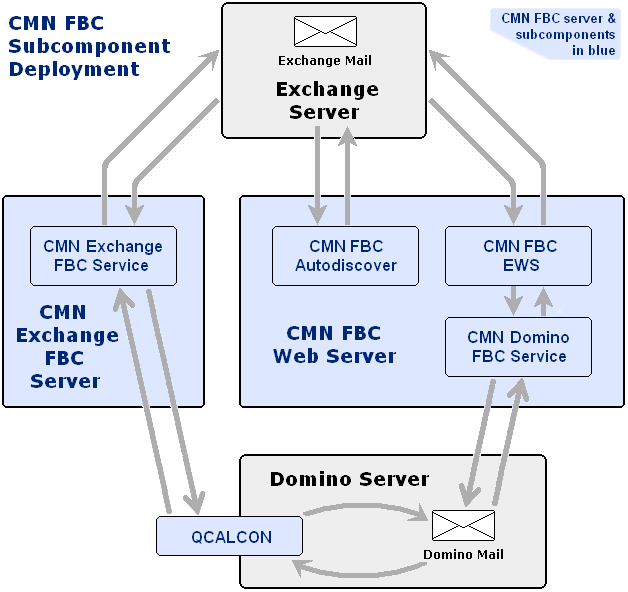CMN Mail Connector
|
• |
Stored forms (created with Store form in document). |
Before introducing CMN, Ellen configures Notes person documents and AD object records to permit internal SMTP mail-routing during coexistence. SMTP mail routing can be configured for either single-domain or multi-domain environments, and Ellen prefers using smart hosts to configure a single-domain routing scheme. She configures Exchange to route mail to a smart host if Exchange determines the recipient is not in the local internet domain, via the targetAddress attribute in the Active Directory object record. Meanwhile, she configures Domino to do the same thing in reverse for a recipient whose local internet domain address is not listed in any Domino person documents. Then she configures both smart hosts to point to the CMN Mail Connector server.
CMN Free/Busy Connector
Ellen knows that calendar features are popular among all American Widgets users, but obviously the features will be useful only if they have access to accurate, timely free/busy information for all users. CMN’s Free/Busy (F/B) Connector is a coordinated set of applications that enable Exchange and Domino to query the calendar availability of each other's users. Sharing free/busy data between Notes and Exchange simplifies calendar updates when accepting a meeting invitation, or changing the day/time or canceling a meeting, or making some other change to an existing meeting or recurring meeting series.
In addition to the query, translation and reply functions, both the Exchange and Domino servers require a service to facilitate data communications between themselves and external data sources (e.g., each other). Exchange uses Exchange Web Service (EWS) for communications with other applications, while Domino requires a server task. And finally, Exchange also uses an Autodiscover service to track and report the location (URL) of the EWS.


